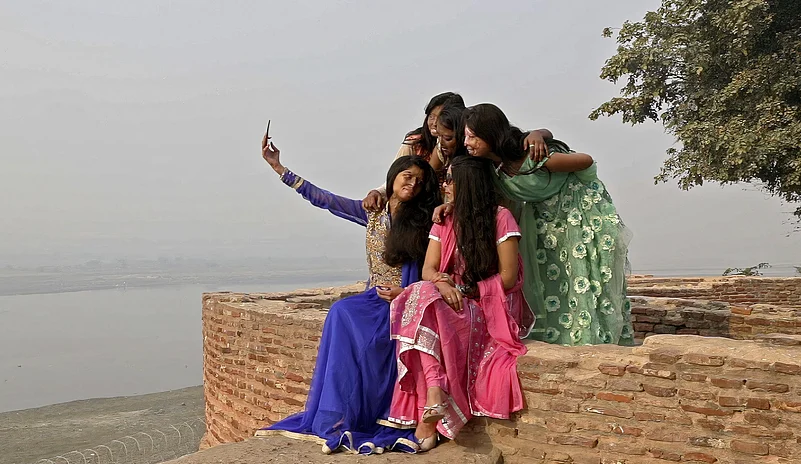“Mujhse dosti nahi ki to tezaab se chehra bigaad dunga” (If you don’t love me back, I will destroy your face with acid). If you are a girl growing up in India, these are not words you are unfamiliar with. You must have read them in a news report or watched them play on primetime. If you were unfortunate enough, one of your own ‘lovers’ might have threatened you with them. Such is the reality of acid violence in our country; reckless, brutal, uncontrolled. Women across different age groups have fallen prey to its ubiquity, some for not complying, others for simply being who they were: a woman.
Siddhant Sarin라이브 바카라 Ayena (Mirror) (2022), which won the 70th National Film Award in the 'Best Non-Feature Film' category, brings to light the stories of Ritu Saini and Faraha Khan—two acid attack survivors trying to navigate their everyday. What is revealed is a tale of hope, courage, and unflinching resilience.
Ritu was seventeen when her cousin splashed acid on her. “He wanted to marry me,” she says. Faraha, an embroidery artist, was attacked by her husband after they split as a couple. She wanted to expand her embroidery business but had to stop it altogether after the incident. “One of my eyes has completely dissolved, and the other has only twenty percent vision left,” she notes. Their scarred faces not only indicate the terrifying magnitude of violence inflicted upon them, but also mirror the trauma, vulnerability, and self-doubt they have to battle on a daily basis.

Historically, cinema has shared an interesting relationship with the human face. The close-up shot, in particular, has played a significant role in fuelling the voyeuristic tendencies of the film spectator. The face—manipulative, misleading, deceitful—has often laid a road to the narrative, but rarely epitomised one. Ayena re-moulds this relationship by placing the face at the centre of its storytelling. The viewer cannot help but focus on the surgically reconstructed faces of Ritu, Faraha, and all the other survivors featured in the film. We hardly need to listen to their struggles. We barely need to follow their stories. Instead, their faces become the ayena; a mirror, reflecting an unwavering fight against patriarchy.
While the film prompts reflections on the cruelty of acid violence, it does not pity its protagonists. Ritu, Faraha, and Anshu aren’t lamenting about their situations; instead, they are diligently rebuilding their lives—physically, emotionally, and financially—one step at a time. Together, they run the 'Sheroes Hangout' cafe and live as independent women, with each other, for each other, and for themselves. If Faraha seeks hair transplantation from a dermatologist, Ritu confidently strides down the ramp for a designer. Behind their scarred faces, we meet loving aunts, mischievous friends, affectionate daughters, and desirous women willing to give life a second chance.

Photographs play an essential role in the film. Faraha, who remains cheerful throughout the sixty minutes, finds herself in tears as she flips through an old photo album. A reminder of the past, the photographic image acts as evidence of destruction. Interestingly, they also represent a journey towards acceptance. By highlighting several instances of photography—such as Ritu asking Faraha to capture her in a new outfit, the women joyfully posing in front of the Itmad-ud-Daulah mausoleum, and Faraha라이브 바카라 doctor clicking a pre-operative photo—Sarin presents photography as an act of care, acknowledgement, and transformation.
If the film evocatively captures the life-altering experiences of survivors, it also portrays how unperturbed the abusers remain. Ritu has to pass by the site every time she returns home, while Faraha has battled several nightmares before finally managing to let go of her torment. Meanwhile, her husband has remarried again. This raises pressing questions: Why does the justice system fail these women? What drives individuals to commit such heinous crimes without remorse? Are relationships that fragile? Sarin invites us to contemplate. While definitive answers remain elusive, we are left with the lyrics of two popular songs that play at the beginning of the film: itni shakti humein dena daata, man ka vishwaas kamzor ho na, (give us strength O Lord, that the faith in our hearts never wavers) and duniya mein kitni hai nafratein, phir bhi dilon mein hai chahatein (there is so much hatred in the world, and yet, the heart keeps loving).
Vasudha Chatterjee is a freelance writer and researcher. She completed her post graduation from the School of Arts and Aesthetics, JNU and writes on Art and Culture.















